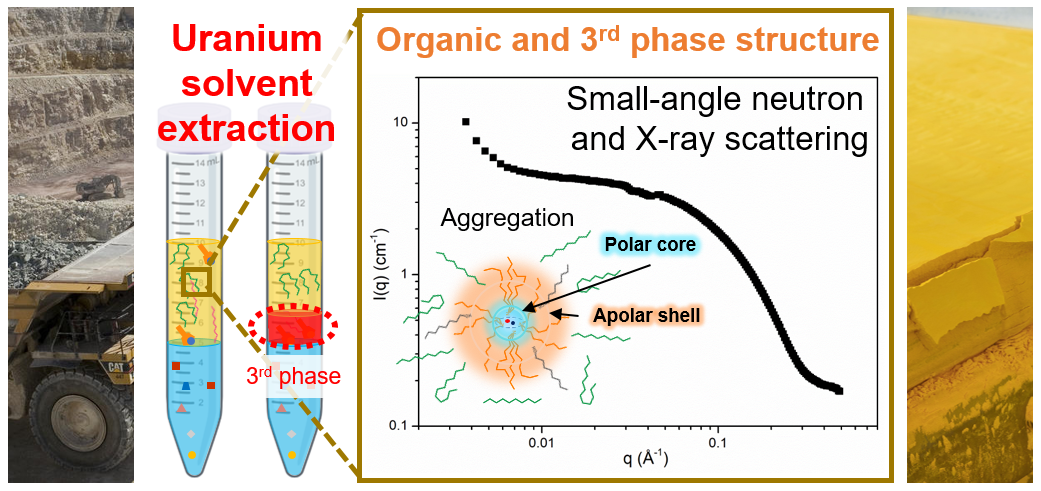
from the LTSM team and on the following topic:
"Molecular and supramolecular mechanisms of uranium extraction by tertiary amines and quaternary ammoniums".
Defense scheduled for Friday, October 20, 2023 at 9:30 AM (ICSM Auditorium).
The AMEX process, which purifies uranium before the fuel cycle, is based on the application of an organic phase composed of tertiary amines diluted in an alkane and contacted with an aqueous leachate. This process faces limitations such as non-selective extraction of other metal cations, the formation of a third phase when the organic phase becomes overloaded, and the loss of organic compounds by evaporation or entrainment.

Neutron and X-ray scattering studies showed that the branching of the amine alkyl chains affects the structure of the organic phase, with a trend which can directly be related to the extraction efficiency. Intermediate branching provides good extraction performance and stabilizes the reverse micelle-like aggregates which leads to decreased attractive interactions. On the contrary, excessive branching inhibits aggregation and extraction. These results have been rationalized with the so-called ienaic thermodynamic approach. The impact of the length of the diluent chain was also studied. Although it has little effect on the extraction properties, the diluent length strongly influences the formation of the 3rd phase as well as the structure of the organic phase. New insights on the mechanisms of the third phase formation have thus been updated: reverse micellar aggregates tend to elongate into ellipsoidal aggregates; depletion forces are involved in the 3rd phase transition; some sub-nanometric nanodroplets composed of concentrated aggregates are formed before demixion. New extraction systems using mixtures of protonated amines and quaternary ammoniums have been proposed, providing improved extraction performance without the use of diluent and phase modifiers. These systems have shown significant enhancements in extraction selectivity, solvent volatility, and environmental impact. Significant improvements were assessed in terms of extraction selectivity, solvent volatility, and environmental impact. The non-linearities observed on the extraction of uranium were interpreted by spectroscopic analyses.
Keywords: Liquid-liquid extraction; AMEX process; Uranium purification, Mechanisms of extraction; Mechanisms of 3rd phase formation; Small-Angle X-ray and Neutron Scattering; Ionic liquids